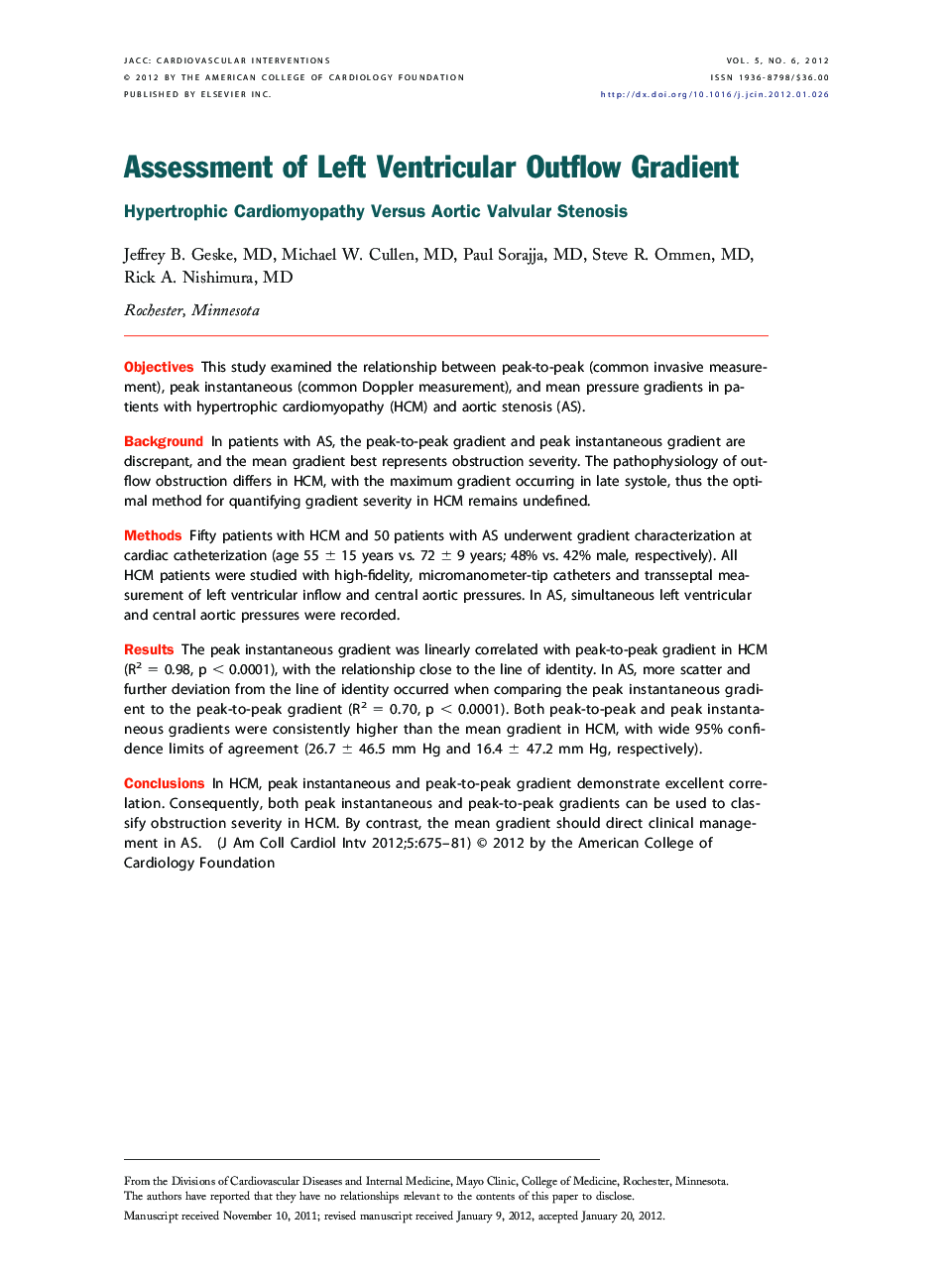| کد مقاله | کد نشریه | سال انتشار | مقاله انگلیسی | نسخه تمام متن |
|---|---|---|---|---|
| 2941040 | 1177052 | 2012 | 7 صفحه PDF | دانلود رایگان |

ObjectivesThis study examined the relationship between peak-to-peak (common invasive measurement), peak instantaneous (common Doppler measurement), and mean pressure gradients in patients with hypertrophic cardiomyopathy (HCM) and aortic stenosis (AS).BackgroundIn patients with AS, the peak-to-peak gradient and peak instantaneous gradient are discrepant, and the mean gradient best represents obstruction severity. The pathophysiology of outflow obstruction differs in HCM, with the maximum gradient occurring in late systole, thus the optimal method for quantifying gradient severity in HCM remains undefined.MethodsFifty patients with HCM and 50 patients with AS underwent gradient characterization at cardiac catheterization (age 55 ± 15 years vs. 72 ± 9 years; 48% vs. 42% male, respectively). All HCM patients were studied with high-fidelity, micromanometer-tip catheters and transseptal measurement of left ventricular inflow and central aortic pressures. In AS, simultaneous left ventricular and central aortic pressures were recorded.ResultsThe peak instantaneous gradient was linearly correlated with peak-to-peak gradient in HCM (R2 = 0.98, p < 0.0001), with the relationship close to the line of identity. In AS, more scatter and further deviation from the line of identity occurred when comparing the peak instantaneous gradient to the peak-to-peak gradient (R2 = 0.70, p < 0.0001). Both peak-to-peak and peak instantaneous gradients were consistently higher than the mean gradient in HCM, with wide 95% confidence limits of agreement (26.7 ± 46.5 mm Hg and 16.4 ± 47.2 mm Hg, respectively).ConclusionsIn HCM, peak instantaneous and peak-to-peak gradient demonstrate excellent correlation. Consequently, both peak instantaneous and peak-to-peak gradients can be used to classify obstruction severity in HCM. By contrast, the mean gradient should direct clinical management in AS.
Journal: JACC: Cardiovascular Interventions - Volume 5, Issue 6, June 2012, Pages 675–681